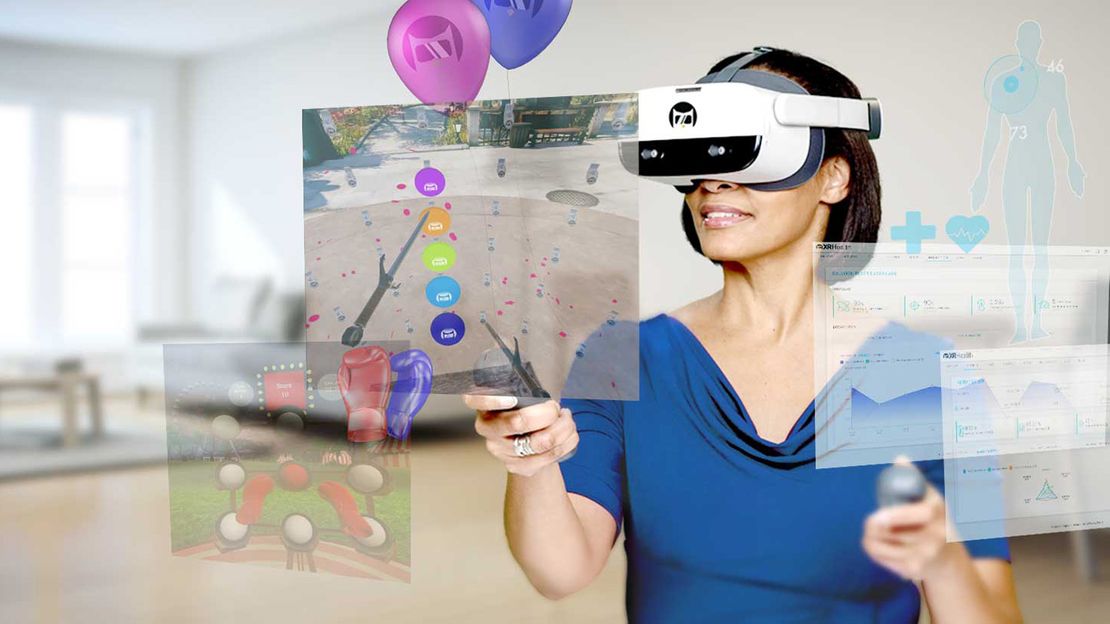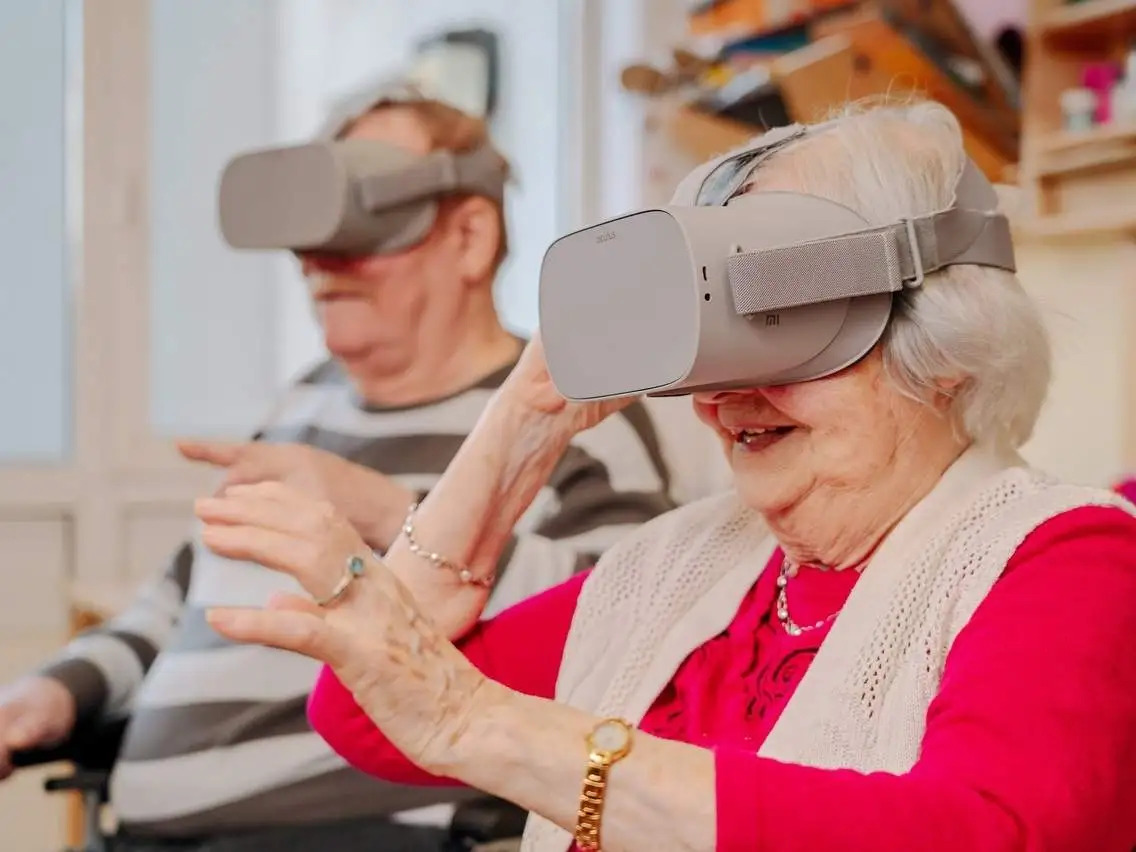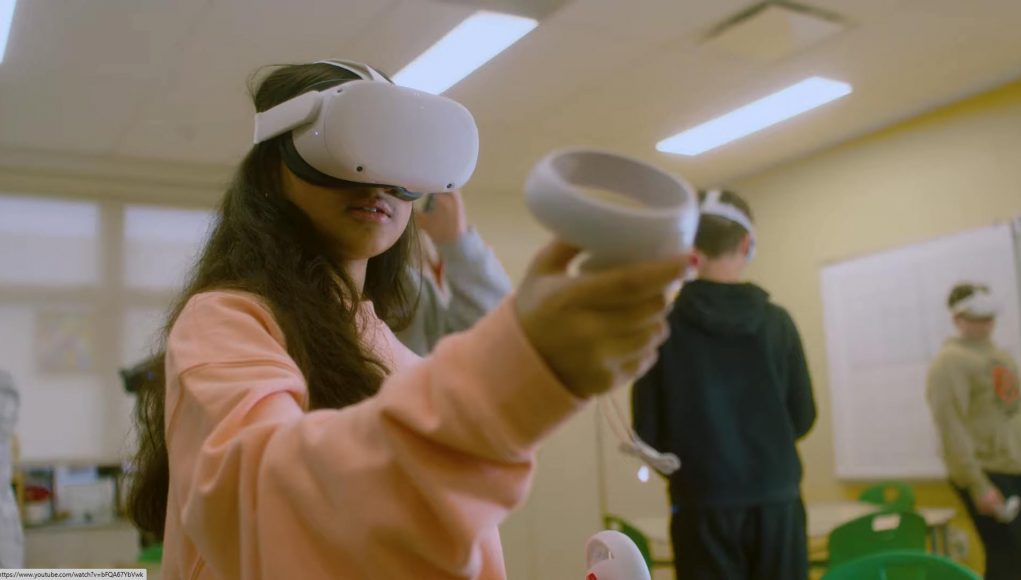Who knew that telehealth and virtual reality (VR) made such a helpful combination? I tried it for my rheumatoid arthritis symptoms and stress management.
After living with chronic pain from rheumatoid arthritis for over eighteen years, I’m no stranger to pain relief strategies. I’ve tried everything from hot packs to cold packs, massage to cognitive behavior therapy, acupuncture to traditional western medicine. However, until recently I had never tried virtual reality (VR) teletherapy for chronic pain.
What Is XRHealth Virtual Reality Telehealth for Pain?
XRHealth is a company that provides traditional healthcare services (such as physical, occupational, and speech therapy) through innovative virtual reality technologies.
Here’s how it works: First you have a telehealth screening and evaluation appointment where a professional makes sure that you can appropriately receive services via this technology. Then you receive a VR Telehealth Kit, which includes a VR headset, two hand controls, and access to a plethora of specially designed programs to help with pain management, orthopedic injuries, cognitive impairments, neurological disorders, stress, and anxiety.
After learning how to use the technology, you have live video sessions with the appropriate health professional, who collaborates with you on your therapy goals. Your goals could be anything from increased range of motion for your neck to decreased pain. You’ll then have weekly or twice weekly sessions for three months on average.
During the sessions, you’ll spend some time talking back and forth with your therapist via live video chat, just like any other teletherapy appointment. Additionally, you will spend some time actively engaged in the VR activities your therapist has assigned to you. The therapist then remotely monitors your progress and suggests ways to modify your activities in real time.
The teletherapy process for XRHealth also includes a special app where you can track your progress and chat with your therapist in between sessions. They can see all the activities you’ve done with the headset in between sessions. According to my occupational therapist, this really helps patients remember to keep working on their goals in between sessions.
Finally, when you’ve reached your goals, you get discharged from therapy and can opt to return the headset or purchase a subscription plan where you can continue using the headset on your own without the therapist’s oversight.
As for the cost, fees vary based on your state, your health insurance plan, and the number of telemedicine sessions that you require. Learn more on XRHealth’s pricing guide. For people who do not have insurance coverage and pay out of pocket, prices start around $179 per month.
RELATED: Virtual Reality Could Soon Be Park of Your IBD Care
Here’s What Happened When I Tried It
I met with an experienced occupational therapist named Valishali Patel, who walked me through the technology and suggested specific programs that could help with my chronic pain and anxiety. She also shared an example treatment plan that she could make for a patient like me, which included three virtual reality 10 to 30 minute exercises a day to target decreased stress, decreased pain, improved cognition and improved hand range of motion and strength.
She really took interest in who I am as a person, what’s important to me and how I relate to my pain and anxiety. She also helped me figure out which settings on each program would be best for me. My favorite program was Luna, which walked me through beautiful guided meditations and breathing exercises in a snowy forest, and Balloon Blast, which got me up and moving to help me continue working on my arm and hand range of motion and strength. It definitely brought out my competitive side, at times I felt like I was playing a video game and I wanted to “level up!”
RELATED: Smart Tech for People With Rheumatoid Arthritis
Three Things I Liked About XRHealth Virtual Reality
- Convenience I’ve spent the last two decades running from medical appointment to appointment, paying for parking, spending time away from my small child while spending too much time in the car. I loved the convenience of accessing this from my own home!
- Real-Time Feedback It was incredible to see the real-time feedback while I did exercises involving movement and cognition; the programs immediately reported my success rate percentages. The stress and pain programs also showed me how my pain and stress levels decreased after the exercises.
- Relaxation Results I spent a lot of time working on relaxation and breathing, as those techniques work well for both stress and chronic pain. Whenever I’ve tried guided meditations in the past with audio only, I’ve found that my mind wandered a lot. With the Virtual Reality platform, the visual and auditory stimulation kept me immersed and engaged in the exercise so I felt very relaxed after completing it.
Three Things I Disliked About XRHealth Virtual Reality
- Learning Curve For most patients, virtual reality will be a brand new skill, and like any skill, it can be difficult to learn. However, XRHealth does provide tech support during the first appointment to help you get used to it.
- Graphic Quality The quality of the graphics was uneven at times. Some of the programs were stunningly beautiful and realistic, such as one where you can feel like you’re swimming with dolphins! Other sections looked unfinished to my eye. For example, in one section where you can clearly tell that a deer looks like it’s been rendered in a computer program.
- New Habit Even though I was very excited about the technology, since it wasn’t part of my normal habit or routine, I found it hard to remember to do the exercises (however I know with time that would be remediated).
How XRHealth Virtual Reality Telehealth May Help During the COVID-19 Pandemic
Now that many chronic pain patients are accessing medical services via telehealth technologies, and also spending a lot of our working days on Zoom meetings, many are struggling with “screen fatigue.” Receiving services via virtual reality, however, feels different than looking at a regular computer monitor, tablet, or phone. The immersive quality really transported me, and I found it to be a welcome change from my regular screen routine!
Additionally, I found it refreshing that my occupational therapist took my mental health into account. She said that almost all of her patients currently benefit from stress management techniques, which are included for every patient in the VR Telehealth Kit.
RELATED: 7 of the Best Activity Apps for People With Rheumatoid Arthritis
The Bottom Line
Telehealth services provided via virtual reality are an immersive, engaging, and dare I say fun way to receive traditional physical therapy (PT) and occupational therapy (OT) services. I found it safer, more convenient, and more engaging than traditional in-person services. I particularly enjoyed the immersive relaxation exercises which resulted in decreased stress and pain.
RELATED: I Tried HoMedics ParaSpa Plus Paraffin Bath for My Arthritis — and It Really Helped
Other Ways I Manage My Chronic Pain
The first line of defense for my rheumatoid arthritis pain is addressing the underlying disease, which involves medications prescribed by my medical team. Additionally, on a daily basis I use lifestyle factors and daily techniques such as:
- Compression Gloves Compression works really well on my inflammation and pain. I have a variety of gloves for different intensities of pain!
- Exercise Simple daily exercise, including walking my dog, boosts my mental well-being, decreases stress, and also is good for preventing the sort of pain and stiffness and can result from inactivity.
- Stress Management Stress triggers inflammation, which can worsen pain. I use mindfulness-based stress reduction techniques on a daily basis.
Quelle:
Foto: Not the same old physical therapy! Virtual reality is incorporated into remote occupational and physical therapy exercises designed to help relieve joint pain.XRHealth




